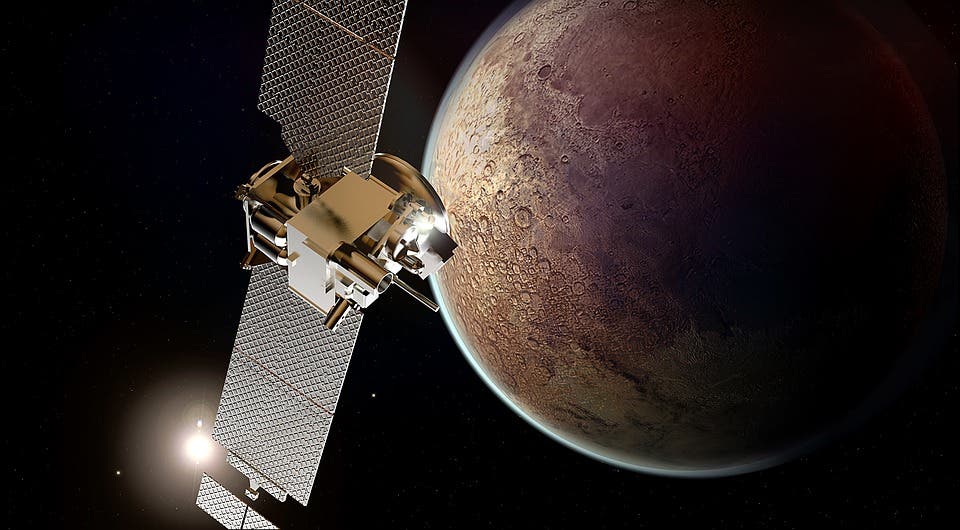Putting a satellite into Mars orbit has never been easy. For the information and data they need to gather, probes must obtain a specific low-altitude orbit. To achieve this orbit, satellites utilize a technique called Aerobraking which brushes the craft against the top of a planetary atmosphere. To attain the maximum drag, the orbiter lowers the craft’s altitude with a little help from its solar panels. However, this procedure takes fuel and lots of time to complete, generally up to six months.
Now though, engineers at the University of Illinois Urbana-Champaign are improving upon the process to save both time, energy and money.
“The trip out to Mars takes somewhere between six to nine months,” said Zach Putnam, an aerospace engineering professor at the university. “We can’t really change that, but we think we can shorten the time it takes to aerobrake to a low-altitude orbit. And the propellant onboard we save can be used to do other things like keep the spacecraft alive longer.”
Engineers have created a real-time algorithm that rotates a satellite’s solar panels which can control how much drag is generated on the spacecraft. The algorithm includes control modes to limit heat rate or heat load — or both — while attempting to take advantage of energy reduction. The process can then be used to steer the craft during atmospheric passes in order to control heating and energy depletion. This process allows the satellite to fly much closer to operational constraints and aerobrake much faster.
“Being able to steer the satellite during each atmospheric pass enables us to ensure we don’t over temperature the solar panels while flying much closer to the thermal limit,” Putnam said. “This is a big improvement. Instead of aerobraking for three to six months, it might only take a couple of weeks.”
Aerobraking consists of three phases: Walk-In, Main Phase and Walk-Out.
During the Walk-In phase, engineers direct the spacecraft to lower the periapsis (the closest point to Mars in its orbit) one orbit at a time, moving the spacecraft from its Mars orbit insertion altitude to its aerobraking altitude. This phase is utilized as a calibration period to understand atmospheric densities and the way which the orbiter performs in and out of aerobraking. This generally lasts about a week or five orbits of the Red Planet.
The Main Phase is the longest and can last around five and a half months. Once the satellite reaches its operational altitude (where the desired atmospheric densities were found), the main stage of aerobraking commences. The orbiter is commanded to perform large-scale decreases in its orbit. If the altitude got too low, the craft would be in danger of overheating. If the altitude gets too high, aerobraking finishes too late. Therefore, small propulsive maneuvers are occasionally performed to keep the satellite within a specified “corridor” by raising or lowering its periapsis altitude.
The Walk-Out Phase is the shortest phase at about five days. Here the orbiter to increases its periapsis, causing the orbit to shrink more leisurely. When the apoapsis (the farthest away from Mars the spacecraft reached in its orbit) reduces to 280 miles (450 kilometers), the periapsis is raised out of the atmosphere and aerobraking is finished.
Putnam believes the new process will transform the way future Mars orbiters operate.
“This software would greatly reduce our reliance on ground stations,” he said. “If we can automate it onboard and only have to check in with the spacecraft once a week, that would really bring costs down. And, it could be done by many satellites at the same time.”
The study was published in the Journal of Guidance, Control and Dynamics.







